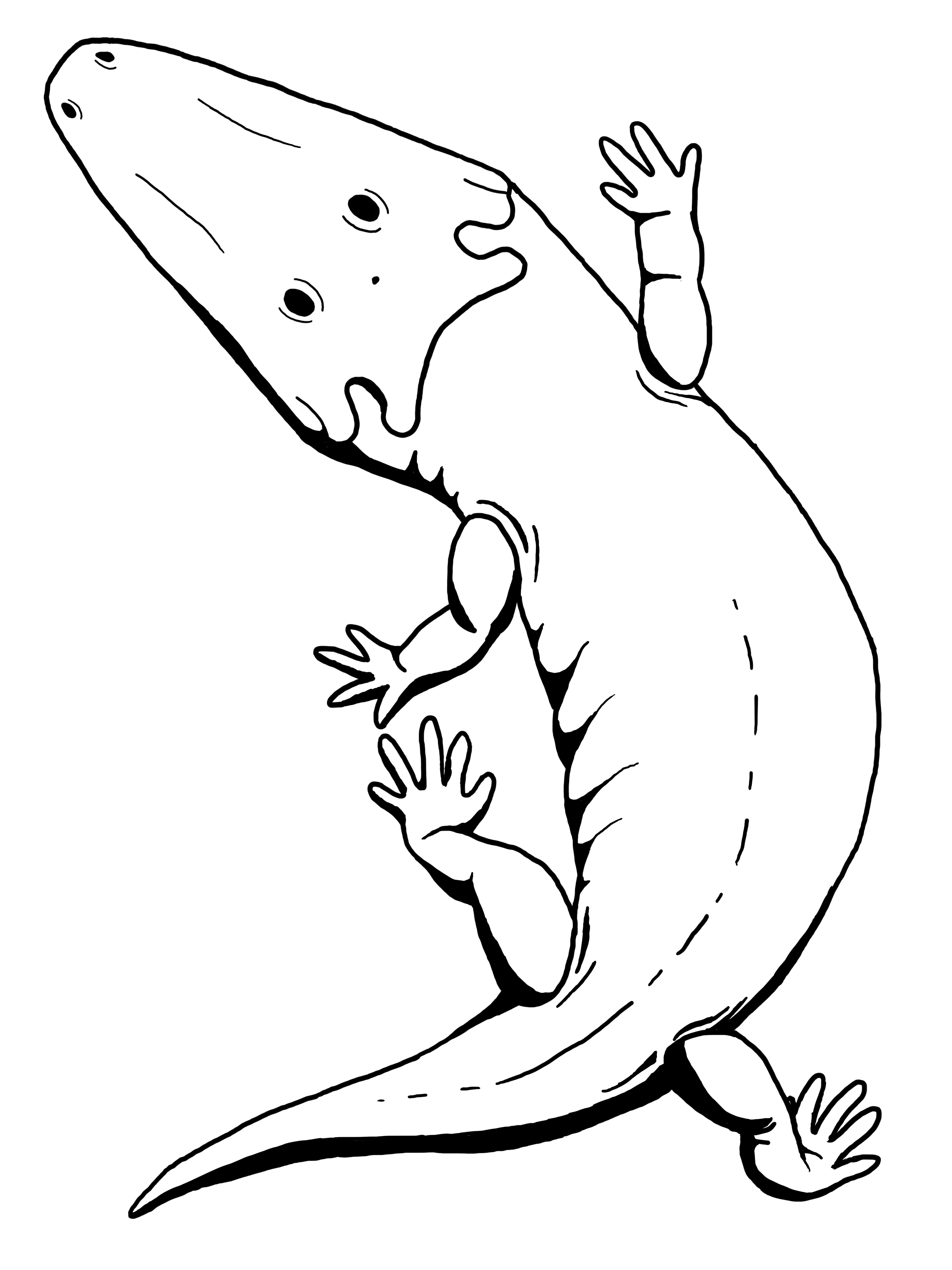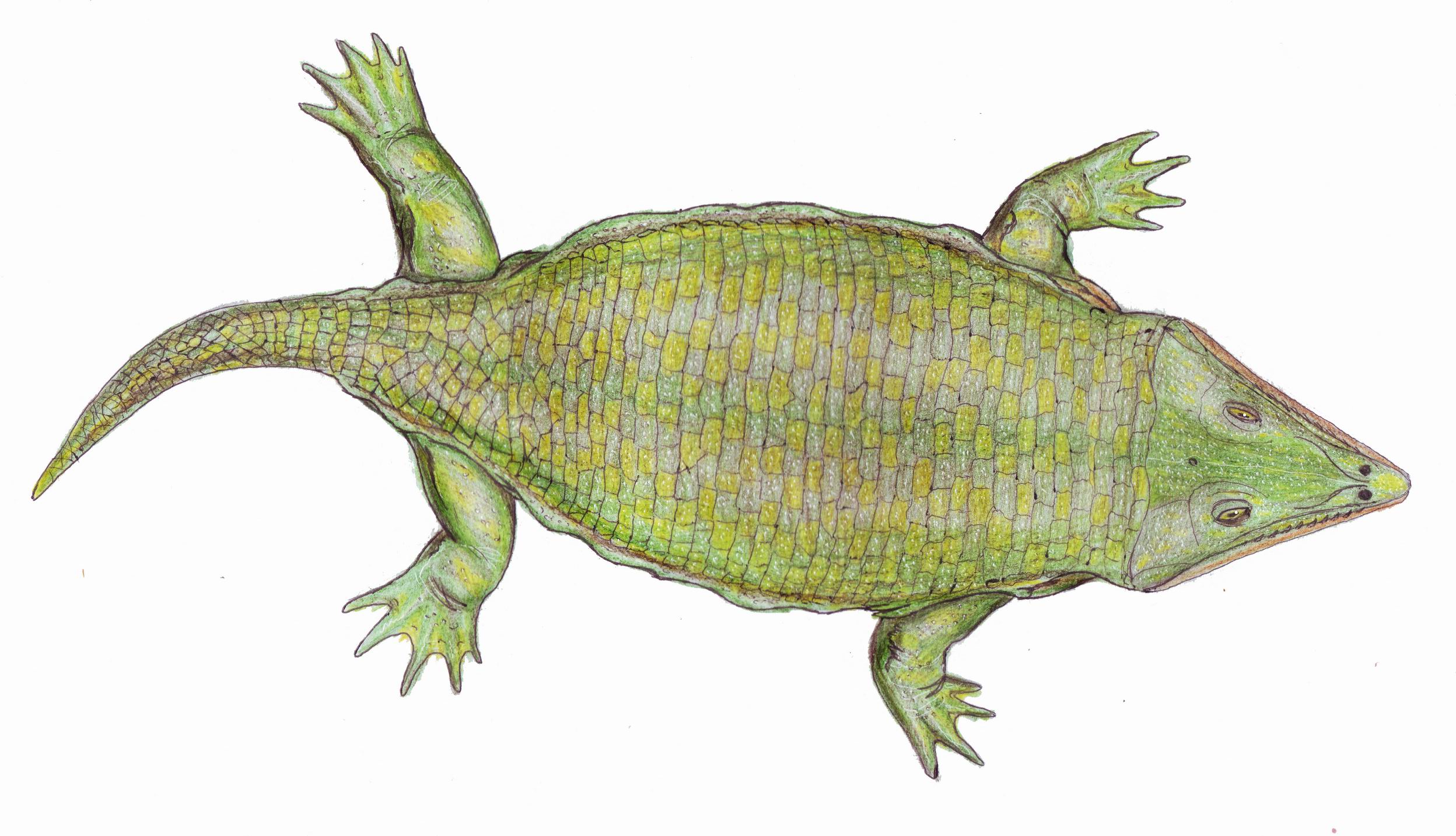|
Vanastega
''Vanastega'' is an extinct genus of Triassic temnospondyl amphibian in the family Brachyopidae. It is known from the Cynognathus Assemblage Zone in Burgersdorp, South Africa. The genus contains just one species, ''Vanastega plurimidens'', the type species. See also * List of prehistoric amphibians This list of prehistoric amphibians is an attempt to create a comprehensive listing of all genera from the fossil record that have ever been considered to be amphibians, excluding purely vernacular terms. The list includes all commonly accepted g ... References Brachyopids Anisian life Triassic amphibians of Africa Fossil taxa described in 2003 Taxa named by James Kitching {{Temnospondyli-stub ... [...More Info...] [...Related Items...] OR: [Wikipedia] [Google] [Baidu] |
Brachyopidae
Brachyopidae is an extinct family of temnospondyl labyrintodonts. They evolved in the early Mesozoic and were mostly aquatic. A fragmentary find from Lesotho, Africa is estimated to have been long, the largest amphibian ever known to have lived besides ''Prionosuchus''.Steyer, J.S. & Damiani, R. (2005): A giant brachyopoid temnospondyl from the Upper Triassic or Lower Jurassic of Lesotho. ''Bulletin de la Société Géologique de France'', no. 3: pp 243-248.abstract/ref> Brachyopids were the only group of temnospondyls to survive into the Jurassic aside from their sister family Chigutisauridae. With records of the family from the Jurassic of Asia. List of genera *'' Banksiops'' *'' Batrachosaurus'' *'' Batrachosuchoides'' *'' Batrachosuchus'' *'' Brachyops'' *'' Gobiops'' *'' Notobrachyops'' *'' Platycepsion'' *'' Sinobrachyops'' *'' Vanastega'' *''Xenobrachyops ''Xenobrachyops'' is an extinct genus of temnospondyl amphibian from the Triassic of Australia, describi ... [...More Info...] [...Related Items...] OR: [Wikipedia] [Google] [Baidu] |
Cynognathus Assemblage Zone
The ''Cynognathus'' Assemblage Zone is a tetrapod biozone utilized in the Karoo Basin of South Africa. It is equivalent to the Burgersdorp Formation, the youngest lithostratigraphic formation in the Beaufort Group, which is part of the fossiliferous and geologically important Karoo Supergroup. The '' Cynognathus'' Assemblage Zone is the youngest of the eight biozones found in the Beaufort Group, and is considered to be late Early Triassic (Olenekian) to early Middle Triassic (Anisian) in age (around 247 Ma). The name of the biozone refers to '' Cynognathus crateronotus'', a large and carnivorous cynodont therapsid which occurs throughout the entire biozone. History The first fossils to be found in the Beaufort Group rocks that encompass the current eight biozones were discovered by Andrew Geddes Bain in 1856. However, it was not until 1892 that it was observed that the geological strata of the Beaufort Group could be differentiated based on their fossil taxa. The initial under ... [...More Info...] [...Related Items...] OR: [Wikipedia] [Google] [Baidu] |
List Of Prehistoric Amphibians
This list of prehistoric amphibians is an attempt to create a comprehensive listing of all genera from the fossil record that have ever been considered to be amphibians, excluding purely vernacular terms. The list includes all commonly accepted genera, but also genera that are now considered invalid, doubtful (''nomina dubia''), or were not formally published ('' nomina nuda''), as well as junior synonyms of more established names, and genera that are no longer considered amphibians. Modern forms are excluded from this list. The list currently includes 454 names. Naming conventions and terminology Naming conventions and terminology follow the International Code of Zoological Nomenclature. Technical terms used include: * Junior synonym: A name which describes the same taxon as a previously published name. If two or more genera are formally designated and the type specimens are later assigned to the same genus, the first to be published (in chronological order) is the senior synon ... [...More Info...] [...Related Items...] OR: [Wikipedia] [Google] [Baidu] |
Brachyopids
Brachyopidae is an extinct family of temnospondyl labyrintodonts. They evolved in the early Mesozoic and were mostly aquatic. A fragmentary find from Lesotho, Africa is estimated to have been long, the largest amphibian ever known to have lived besides ''Prionosuchus''.Steyer, J.S. & Damiani, R. (2005): A giant brachyopoid temnospondyl from the Upper Triassic or Lower Jurassic of Lesotho. ''Bulletin de la Société Géologique de France'', no. 3: pp 243-248.abstract/ref> Brachyopids were the only group of temnospondyls to survive into the Jurassic aside from their sister family Chigutisauridae. With records of the family from the Jurassic of Asia. List of genera *'' Banksiops'' *'' Batrachosaurus'' *'' Batrachosuchoides'' *'' Batrachosuchus'' *'' Brachyops'' *'' Gobiops'' *'' Notobrachyops'' *'' Platycepsion'' *'' Sinobrachyops'' *'' Vanastega'' *''Xenobrachyops ''Xenobrachyops'' is an extinct genus of temnospondyl amphibian from the Triassic of Australia, describi ... [...More Info...] [...Related Items...] OR: [Wikipedia] [Google] [Baidu] |
Middle Triassic
In the geologic timescale, the Middle Triassic is the second of three epochs of the Triassic period or the middle of three series in which the Triassic system is divided in chronostratigraphy. The Middle Triassic spans the time between Ma and Ma (million years ago). It is preceded by the Early Triassic Epoch and followed by the Late Triassic Epoch. The Middle Triassic is divided into the Anisian and Ladinian ages or stages. Formerly the middle series in the Triassic was also known as Muschelkalk. This name is now only used for a specific unit of rock strata with approximately Middle Triassic age, found in western Europe. Middle Triassic fauna Following the Permian–Triassic extinction event, the most devastating of all mass-extinctions, life recovered slowly. In the Middle Triassic, many groups of organisms reached higher diversity again, such as the marine reptiles (e.g. ichthyosaurs, sauropterygians, thallatosaurs), ray-finned fish and many invertebrate g ... [...More Info...] [...Related Items...] OR: [Wikipedia] [Google] [Baidu] |
James Kitching
James William Kitching (6 February 1922 – 24 December 2003) was a South African vertebrate palaeontologist and regarded as one of the world’s greatest fossil finders. Career His work in the southern hemisphere, including Antarctica, led to the establishment of one of the world's finest fossil collections, housed at the Bernard Price Institute for Palaeontological Research (BPI) in Johannesburg.University of the Witwatersrand, Johannesburg, Bernard Price Institute He contributed greatly to the palaeontology of southern |
2003 In Paleontology
Plants Conifers Angiosperms Gnetophytes Fungi Arthropods Arachnids Insects Conodont paleozoology German paleontologist and stratigraphy, stratigrapher Heinz Walter Kozur (1942-2013) described the conodont genus ''Carnepigondolella''. Vertebrate paleozoology Parareptiles Non-avian dinosaurs Data courtesy of George Olshevsky's dinosaur genera list. Newly named birds Plesiosaurs Pterosaurs Synapsids Non-mammalian Mammals References {{portal, Paleontology [...More Info...] [...Related Items...] OR: [Wikipedia] [Google] [Baidu] |
Genus
Genus ( plural genera ) is a taxonomic rank used in the biological classification of living and fossil organisms as well as viruses. In the hierarchy of biological classification, genus comes above species and below family. In binomial nomenclature, the genus name forms the first part of the binomial species name for each species within the genus. :E.g. '' Panthera leo'' (lion) and '' Panthera onca'' (jaguar) are two species within the genus ''Panthera''. ''Panthera'' is a genus within the family Felidae. The composition of a genus is determined by taxonomists. The standards for genus classification are not strictly codified, so different authorities often produce different classifications for genera. There are some general practices used, however, including the idea that a newly defined genus should fulfill these three criteria to be descriptively useful: # monophyly – all descendants of an ancestral taxon are grouped together (i.e. phylogenetic analysis should c ... [...More Info...] [...Related Items...] OR: [Wikipedia] [Google] [Baidu] |
Triassic
The Triassic ( ) is a geologic period and system which spans 50.6 million years from the end of the Permian Period 251.902 million years ago (Mya), to the beginning of the Jurassic Period 201.36 Mya. The Triassic is the first and shortest period of the Mesozoic Era. Both the start and end of the period are marked by major extinction events. The Triassic Period is subdivided into three epochs: Early Triassic, Middle Triassic and Late Triassic. The Triassic began in the wake of the Permian–Triassic extinction event, which left the Earth's biosphere impoverished; it was well into the middle of the Triassic before life recovered its former diversity. Three categories of organisms can be distinguished in the Triassic record: survivors from the extinction event, new groups that flourished briefly, and other new groups that went on to dominate the Mesozoic Era. Reptiles, especially archosaurs, were the chief terrestrial vertebrates during this time. A specialized subgroup of arch ... [...More Info...] [...Related Items...] OR: [Wikipedia] [Google] [Baidu] |
Temnospondyl
Temnospondyli (from Greek τέμνειν, ''temnein'' 'to cut' and σπόνδυλος, ''spondylos'' 'vertebra') is a diverse order of small to giant tetrapods—often considered primitive amphibians—that flourished worldwide during the Carboniferous, Permian, and Triassic periods. A few species continued into the Jurassic and Cretaceous periods. Fossils have been found on every continent. During about 210 million years of evolutionary history, they adapted to a wide range of habitats, including freshwater, terrestrial, and even coastal marine environments. Their life history is well understood, with fossils known from the larval stage, metamorphosis, and maturity. Most temnospondyls were semiaquatic, although some were almost fully terrestrial, returning to the water only to breed. These temnospondyls were some of the first vertebrates fully adapted to life on land. Although temnospondyls are considered amphibians, many had characteristics, such as scales and armour-like bo ... [...More Info...] [...Related Items...] OR: [Wikipedia] [Google] [Baidu] |
Burgersdorp
Burgersdorp is a medium-sized town in Walter Sisulu in the Joe Gqabi District Municipality of the Eastern Cape province of South Africa. In 1869 a Theological Seminary was established here by the ''Gereformeerde Kerk'', but in 1905 it was moved to Potchefstroom, acting as an instrument in the formation of the PUK in 1919, then becoming the Potchefstroom University for Christian Higher Education in 1951. The Afrikaner Bond political party was founded in Burgersdorp in 1881. Demographics According to the 2011 census, the town of Burgersdorp proper has a population of 5,240, while the adjacent townships of Mzamomhle and Tembisa have populations of 4,656 and 6,094 respectively, giving the urban area a population of 15,990. Of this population 78.1% described themselves as Black African, 11.98% as Coloured and 9.4% as White. 69.2% spoke Xhosa as their home language, 20.1% spoke Afrikaans, 3.3% spoke Sotho, 1.4% spoke English as their home language and 6.0% spoke some other langua ... [...More Info...] [...Related Items...] OR: [Wikipedia] [Google] [Baidu] |
Type Species
In zoological nomenclature, a type species (''species typica'') is the species name with which the name of a genus or subgenus is considered to be permanently taxonomically associated, i.e., the species that contains the biological type specimen(s). Article 67.1 A similar concept is used for suprageneric groups and called a type genus. In botanical nomenclature, these terms have no formal standing under the code of nomenclature, but are sometimes borrowed from zoological nomenclature. In botany, the type of a genus name is a specimen (or, rarely, an illustration) which is also the type of a species name. The species name that has that type can also be referred to as the type of the genus name. Names of genus and family ranks, the various subdivisions of those ranks, and some higher-rank names based on genus names, have such types. [...More Info...] [...Related Items...] OR: [Wikipedia] [Google] [Baidu] |





_(2).jpg)